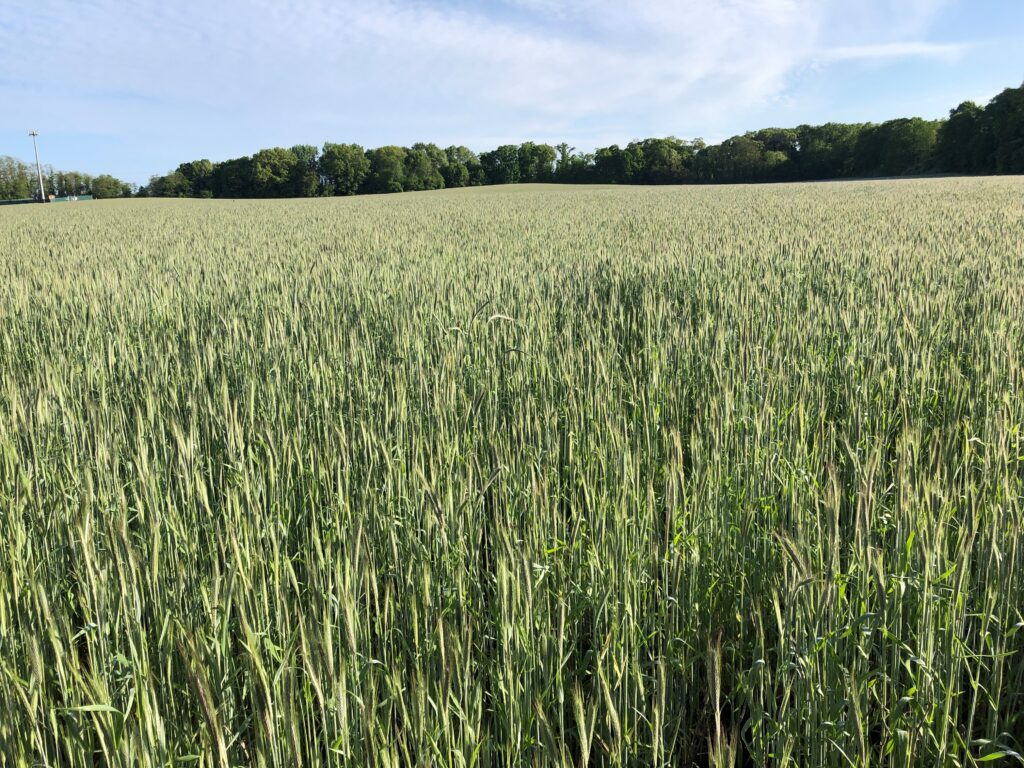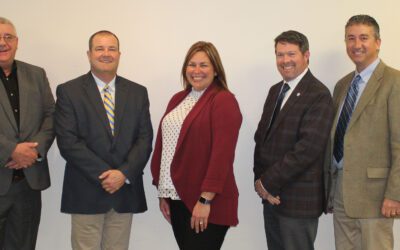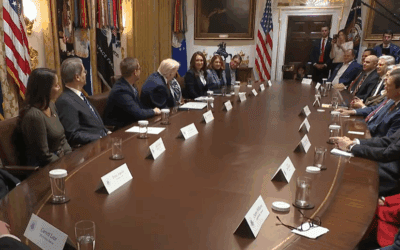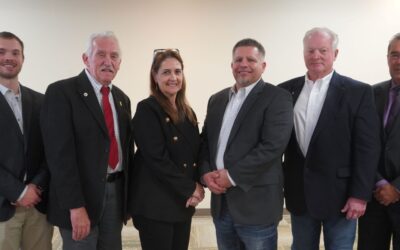Murphy adapts to changing landscape to boost yields, environment for future
By Amie Simpson
Located in the Chesterton area, just 40 minutes southeast of Chicago, Murphy Family Farms has adopted conservation practices to adapt to suburban sprawl and sandy soils found near Lake Michigan.
Tom Murphy is a first-generation farmer raising amylose corn, commercial corn and soybeans. He started with no till and cover crops then added variable rate fertilizer technology over the years.

“We have a farm that is surrounded on three sides by the national lakeshore and on the backside of the farm there is a steelhead stream. The sandy soil was eroding and there were ditches on the farm. We started with no till and then began implementing cover crops,” Murphy said.
“When the largest algal bloom on record in Lake Erie happened, I knew I wanted to do more in our area. It’s important to stay ahead of the curve (on conservation practices) and get things right before the government steps in with mandates. I went to some classes and decided foliar feeding was the right next step. We’re using a lot of spoon-feeding technologies with the sprayer as far as applying what the plants need when they need it instead of broadcasting across every acre. We started that about 15 years ago and our yields have kept going up on that farm.”
In addition to increased yield, Murphy said soil health improvements have also led to lower input costs.
“We also have clay soils that used to be hard to work with in the spring. With cover crops, the soils are more relaxed, and we’re seeing improved seed-soil contact and uniform emergence,” he explained. “Our microbes are up, and we don’t have to use as much fertilizer as we did previously.”
Advice he has for farmers interested in planting cover crops, switching to no-till or implementing other conservation practices is to take advantage of available resources through the Natural Resources Conservation Service (NRCS) and the Indiana Association of Soil and Water Conservation Districts.
“That’s what I did. My journey started with the NRCS and my local county soil and water conservation district. There are opportunities like the Environmental Quality Incentives Program (EQIP) and nutrient management programs that both offer resources to farmers,” Murphy said.
It hasn’t been without challenges. “There is a learning curve to cover crops, for example. I would suggest starting small by planting cover crops on 40-50 acres before stepping it up. Revamp your plan as needed, give it a few years, and let the results show for themselves,” he said. “Cover crops require learning from mistakes at the beginning. One mistake we made in the past was letting our cereal rye get too tall and it attracted a batch of armyworms that destroyed our non-GMO corn. We have learned to terminate the cereal rye on the shorter side so that doesn’t happen again.”
Murphy is looking into multiple cover crop blends.
Relationships matter

Building relationships within the agriculture industry is invaluable. Murphy works alongside Gary Dunlap and recognizes him for giving him an opportunity to farm.
“I worked with Gary for a number of years and when he decided he wanted to slow down some, I expressed my interest in farm management opportunities and we developed a plan that worked for both of us,” he said.
Murphy’s goal is to ensure a sustainable future for generations to come by using innovative conservation practices and technology.
“My eight-year-old son, for example, knows the ins and outs of the operation and all he wants to do is farm,” he said. “I do it for him and my other sons and daughter. It’s up to me and my generation to figure out what is and isn’t working to ensure farming practices can continue into the future.”
This goal led him to partner with Shirley Heinze Land Trust through its Agricultural Land Program aimed at protecting Northwestern Indiana farmland.
“I learned about the Shirley Heinze Land Trust when they acquired a piece of property that I was farming. I went to their office and explained that farming is a necessity, and we need to work together because we’re using conservation best practices on our farms,” he said. “The last couple of farms they’ve acquired are still in agricultural production today. That was a huge win for us because as a farmer, first-generation especially, I can’t pay what a developer would pay to buy a piece of ground. This partnership is important. A lot of times people are drawn to land conservation, so they work with the group, give them a better price, and then they leave it in ag production. It works well for everybody.”
Murphy explained it’s important to build relationships like this within the community. Each spring, he visits elementary school classrooms to talk about the environmentally friendly practices used to grow corn and soybeans.
“A lot of kids are so far removed from the farm today. If I can spend 30 minutes talking with them and doing a seed or soil project, then I’m not just a stranger in a big tractor going down the road, the kids will know I’m farmer Tom,” he said.
The future of farming
Murphy isn’t afraid to try new practices as he considers what the next decade or so of farming will look like in his area.
“Being 40 miles from Chicago is great for a lot of things, but farming isn’t one of them,” he said.
Some of their challenges are moving a large piece of equipment up and down the road, figuring out how to best get from one farm to another, and avoiding rush hour.
“In the future, we may have to think outside the box. Instead of buying the latest and greatest and biggest equipment, we may have to find the one that folds up to the right size to get down the road at the right time,” he said. “The infrastructure here isn’t going to get any bigger and the roads keep getting narrower, so that’s the kind of stuff we think about.”
Find more Conservation Case Studies here.
Posted: March 21, 2025
Category: ICMC, Indiana Corn and Soybean Post - March 2025, ISA, News, Sustainability



